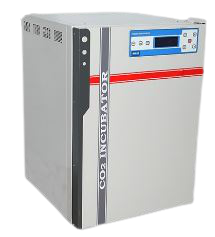PHASE CONTRAST MICROSCOPE
MAKE DINESH SCIENTIFIC
DESCRIPTION
Because they allow researchers and scientists to examine and examine tissues, cells, and other biological material at a microscopic level, microscopes are essential tools in pathology and medical science. Research and pathology microscopes are made to specifically address the needs of the medical, biological, and allied sciences sectors. The following are some essential elements of using microscopes in research and pathology settings:
LIGHT MICROSCOPES:
- The most popular kind of microscope used in pathology and research are brightfield microscopes. They are useful for seeing stained specimens and offer a bright background.
PHASE-CONTRAST MICROSCOPES:
- When viewing translucent or unstained materials, such living cells, phase-contrast microscopy is especially helpful. It improves these specimens’ contrast without the requirement for staining.
FLUORESCENCE MICROSCOPES:
- Research uses fluorescence microscopy extensively. It entails labeling certain molecules or structures within cells with fluorescent dyes or proteins to enable fine-grained imaging of individual cell components.
PATHOLOGY DIGITAL:
- Digital imaging technology is used in the collection, organization, and analysis of pathology data in digital pathology. Pathologists can see and evaluate digital slides using whole-slide imaging, which facilitates remote diagnosis and teamwork.
MECHANIZED MICROSCOPY:
- Microscopy technologies are becoming more and more automated, enabling higher throughput analysis and more productivity in pathology and research labs.
RESEARCH USES:
- In several scientific fields, such as cell biology, microbiology, neuroscience, and developmental biology, microscopes are essential instruments. The structure and operation of cells, tissues, and organisms are studied by researchers using microscopes.
TECHNICAL DETAILS:
MODEL |
DS-MS-100 |
| STAGE WARMER | |
| Microscope Type | Trinocular Phase Contrast Microscope, upgradable to fluorescent facility |
| Type | Suitable Glass Plate Stage Warmer with Controller |
| Size | 125-130 x 85-95 mm |
| Temperature Setting Range | Ambient to 50°C |
| Accuracy | ±0.3°C |
| COMPUTER | |
| Processor | Intel i5 |
| RAM | 16 GB |
| Storage | 1 TB HDD |
| Connectivity | Inbuilt Wi-Fi |
| Monitor | 23-inch HD Monitor |
| Operating System | Latest Suitable Operating System |
| Compatibility | Suitable for running microscope software |
| MICROSCOPE | |
| Camera System | Dedicated CMOS digital camera with image analysis facility |
| Nosepiece | Inward type sextuple nosepiece with Light Intensity Management function |
| Mechanical Stage | Dual slide holder with vertical movement stopper |
| Illumination | LED illumination with 25,000 hours lamp-life, uniform illumination throughout the FOV |
| Condenser | Phase condenser, turret/rotating type |
| Eyepiece | 10X objectives, FOV 20mm |
| Binocular Tube | 30-45° inclination, interpupillary distance of 50-75mm |
| Phase Contrast | Phase contrast modules inbuilt in condenser (Ph1, Ph2, Ph3); six positions (one bright, one dark field) |
| Phase Objectives | · Plan Achromat CFI Objectives
· 10X NA 0.25, WD 6.5mm · 20X NA 0.4, WD 0.65 mm · 40X NA 0.6, WD 0.56mm spring loaded · 100X oil, NA 1.25, WD 0.13mm spring loaded |
| CAMERA | |
| Camera Type | Compatible CMOS Camera |
| Resolution | 5.5 Megapixels |
| Image Compatibility | Suitable for brightfield and fluorescent light |
| Software | Included for image control and capture |
| Memory | 32 GB Memory Card |
| Live HD Image Resolution | 2880 x 2048 pixels |
| Frame Rate | 25 frames per second at full resolution |
| Computer Connection | USB 3.0 Interface |
| ACCESSORIES | |
| Immersion Oil | N 8CC |
| Dust Cover | Included |
















Reviews
There are no reviews yet.